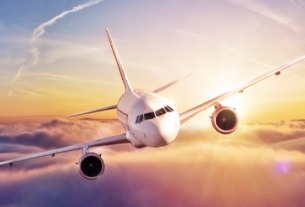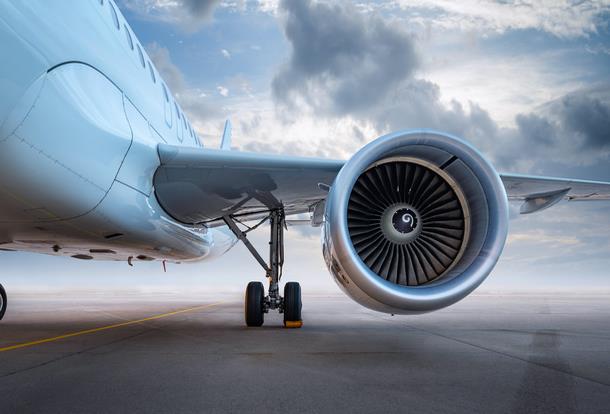The International Air Transport Association (IATA) revised its 2016 financial outlook for global air transport industry profits upwards to USD 39.4 billion (from USD 36.3 forecast in December 2015). That is expected to be generated on revenues of USD 709 billion for an aggregate net profit margin of 5.6%. 2016 is expected to be the fifth consecutive year of improving aggregate industry profits.
In 2015 airlines generated a global aggregate profit of USD 35.3 billion (re-stated from USD 33.0 billion estimated in December 2015). All regions are making a contribution to the USD 4.1 billion boost over 2015 profits with improved results; but there are stark regional differences in performance. Over half of the industry profits will be generated in North America (USD 22.9 billion) while African carriers are forecast to continue generating an overall loss (-USD 0.5 billion).
"Lower oil prices are certainly helping - though tempered by hedging and exchange rates. In fact, we are probably nearing the peak of the positive stimulus from lower prices. Performance, however, is being bolstered by the hard work of airlines. Load factors are at record levels. New value streams are increasing ancillary revenues. And joint ventures and other forms of cooperation are improving efficiency and increasing consumer choice while fostering robust competition. The result: consumers are getting a great deal and investors are finally beginning to see the rewards they deserve," said Tony Tyler, IATA's Director General and CEO.
Resilience
On average, airlines will make USD 10.42 for each passenger carried. "In Dublin, that's enough to buy four double-espressos at Starbucks. Looked at from a different angle Starbucks will earn about USD 11 for every USD 100 in sales while airlines will make USD 5.60. We don't begrudge Starbucks their profitability. But there is clearly still upside for airline profits," said Tyler.
For the second year in a row and only the second time in the airline industry's history, the return on invested capital (9.8%) will exceed the cost of capital (estimated to be 6.8%). This is the minimum expectation level for investors. The airline industry is beginning to generate profits that would be expected of any normal business.
Repaying accumulated debt will take several years of profitability to achieve. Airlines in North America and in some parts of Europe have seen the gearing of their balance sheets fall towards investment grade levels. But for much of the rest of the industry, it is a continuing challenge.
"Airlines are producing solid results even with some strong economic headwinds. It's an impressive performance and the mood of the industry is generally optimistic," said Tyler.
Main Forecast Drivers
Oil Prices: The outlook is based on oil averaging USD 45/barrel (Brent) over the course of the year which is significantly lower than the USD 53.9 average price in 2015. The full impact of lower fuel prices is still being realized as hedges mature. Overall, fuel is expected to represent 19.7% of the industry's expenses, down from a recent high of 33.1% in 2012-2013.
The Global Economy: Weak economic conditions prevail. GDP is expected to expand by 2.3% in 2016. That is down from 2.4% in 2015 and the weakest growth since 2008 when the global financial crisis hit. Consumer spending is relatively strong, but the corporate sector is conserving cash and, despite some easing of government austerity budgets and low interest rates, there is little evidence of an acceleration in infrastructure spending.
Passenger Demand: Passenger demand is robust with 6.2% growth expected in 2016. That is, however, a slowdown from the 7.4% growth recorded in 2015. Capacity is expected to grow slightly ahead of demand at 6.8%. Load factors are expected to remain high (80.0%), but with a slight slip from 2015 (80.4%). Yields are expected to fall by 7.0%. Unit costs, driven by lower fuel prices, are expected to fall by 7.7%. Overall the passenger business is projected to generate USD 511 billion in revenues, down from $518 billion in 2015.
Cargo: The cargo side of the business remains in the doldrums with 2.1% growth in demand. Airlines are growing their fleets with long-haul wide-body aircraft to meet strong passenger demand growth. This adds cargo capacity to a flat air cargo market. Cargo yields are expected to fall by 8.0% this year. Overall cargo is expected to generate USD 49.6 billion in revenues, down from USD 52.8 billion in 2015.
Regional Diversity
Airlines in Asia-Pacific are expected to post a USD 7.8 billion profit in 2016, up from USD 7.2 billion in 2015. Capacity is forecast to expand by 9.1% in 2016, ahead of demand which is likely to grow by 8.5%. Asia-Pacific carriers have a 40% share of global air cargo markets. As a result they continue to feel the brunt of stagnation in this sector, which is holding back the improvement in financial performance. Challenges include intense competition as the budget sector expands, restructuring in the Chinese economy and continuing infrastructure and cost difficulties in the Indian market.
Value Creation
The airline industry continues to add value to its customers, to the wider economy, and to governments:
Consumer benefits from the industry's improved performance are significant. In 2016 the average return airfare (before surcharges and taxes) is expected to be USD 366 which is a 62% reduction on 1995 levels (after adjusting for inflation). Passenger numbers are expected to reach 3.8 billion. And the network of unique city pairs will reach 18,243.
Airlines' environmental performance continues to improve. The industry is on target to meet its goal of improving fuel efficiency by an average of 1.5% annually until 2020. Current analysis shows that on average the sector has improved fuel efficiency by 2.4% per year since 2009, a figure that is expected to normalise in the coming years.
Investments in new aircraft are a major driver of fuel efficiency improvements. In 2016, airlines are expected to take delivery of almost 1,900 new aircraft. About half are projected to replace less fuel-efficient older aircraft.
Read original article




